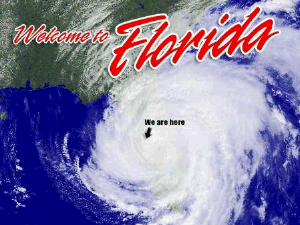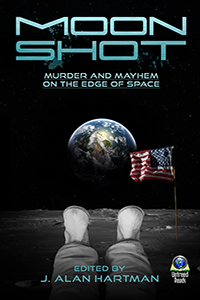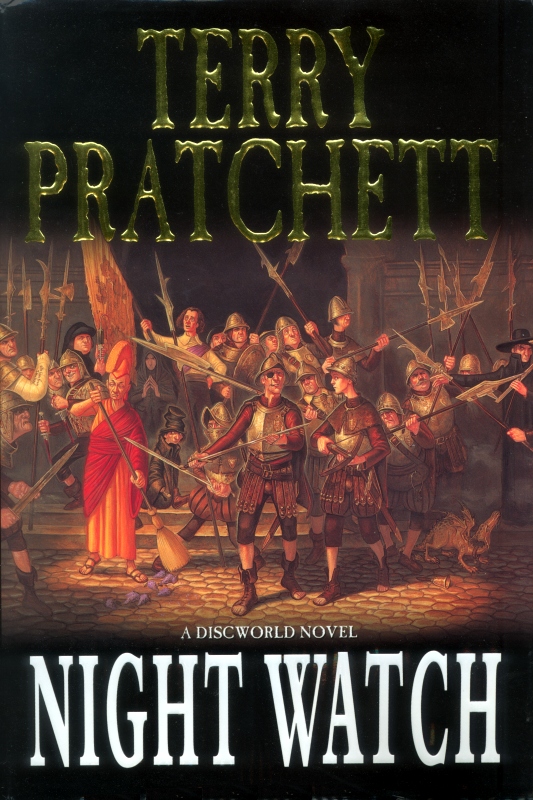Here on SleuthSayers, we’ve often discussed the impact of crime on the lives of victims and their families. This article deals directly with that impact—in this case, the impact childhood sexual assault has on its victims years after they reach adulthood, at which point these adults choose to be called what they now truly are:
Survivors of childhood sexual assault.
I have chosen to write, this week, about
Itahoba Horse, an upcoming program designed to facilitate and foster personal healing for these survivors.
In the interests of full disclosure, I want to make it clear that the founder of Tapestry Institute—the non-profit organization partnering with the WINGS Foundation to present the Itahoba Horse program—is my sister, Dawn Adams Ph.D. But, the reader should also be aware that my sister and I do not always agree on things.
While I spent ten years working for military intelligence and Special Forces, for instance, she earned her doctorate at the University of California Berkley. Consequently, politics is just one area in which our views are worlds apart. It has also been my experience, however, that her views and ideas for assisting people, in manners consistent with those planned-for in the upcoming Itahoba Horse program, have proven remarkably astute and effective in the past. And, further, the approach used in the program is probably of great interest to both readers and writers.
Itahoba Horse Program
The Lone Ranger whistles and his horse, Silver, comes galloping up so the masked man can jump on horseback and get away.
Is this sort of behavior natural to a horse? Is it natural for a person?
Perhaps more germane: If Silver was busily interacting with several other equine friends at the moment the Lone Ranger whistled, would he still be so quick to respond? Or would Silver behave differently when he was part of a de facto herd?
What does this have to do with adults faced with the ongoing trauma resulting from sexual assault they suffered during childhood?
Quite a bit, perhaps. (And, no I’m not accusing the Lone Ranger or his horse of anything. They’re just a couple of handy examples.)
This spring and summer in Fort Lupton, Colorado, adult survivors of Childhood Sexual Assault (CSA) will examine remarkably similar, but much more personal questions as they participate in the Itahoba Horse program.
“Itahoba” is a Choctaw word meaning “connected,” and the program is designed to provide an exploration and strengthening of significant connections—of many kinds—as participants engage with horses in a very special way.
This idea of connection can be extremely important in the lives of CSA survivors, many of whom feel a sense of social or personal isolation due to the stigma inflicted by trauma suffered at a young age. This sense of isolation can be further aggravated if trusted adults were involved in the abuse, or if they failed to believe the child was actually victimized—particularly in those instances in which children were mistakenly (or dishonestly) told that what they reported to a trusted adult never actually happened.
Itahoba Horse is a product of cooperation between two non-profit organizations—WINGS Foundation, which provides counseling and support for adult survivors of childhood sexual assault; and Tapestry Institute, which integrates different ways of knowing, learning about, and responding to the natural world.
Stacy Sheridan, MA, LPC; Program Director & Clinical Supervisor of WINGS Foundation, Inc. says: "I am thrilled to announce WINGS' partnership with Tapestry Institute! As a clinician and program director for WINGS, I consider equine work to be one of the most effective and transformational approaches to healing. I have seen firsthand the power of a horse's presence as they invite a level of vulnerability, intuition, and trust that many of our survivors simply cannot experience with another human at this point in their healing journey. It is for these reasons and many more that I am thrilled to begin referring our survivors to Tapestry and look forward to the transformational healing they will experience through this partnership."
Tapestry Institute’s main focus is the examination and integration of different ways of knowing, learning about, and responding to the natural world. The institute’s objective is to understand how we, as individuals, construct a certain view of the world, including the factors that influence us to create and maintain deeply held beliefs. This, in turn, allows a constructive rearrangement and integration of these factors, permitting people to realize a deeper understanding of the world around us and our place in it.
To illustrate how this plays out in programs such as Itahoba Horse, I’d point to a difference in viewpoints between my wife and myself. We see colors and cars differently.
My wife can name somewhere between five and fifty colors, all of which—to me—go simply by the single name “purple.”
Conversely, when I say, “Wow! Check out that Corvette!” her reply usually runs along the lines of, “You mean the blue car?”

I love classic cars. For instance, I love old Mustangs, the older Corvettes with the tubular headlights, and the early Stingrays (which I prefer). To my wife, however, all cars boil down to: redcar, bluecar, whitecar, etc. She sees no difference between a blue 1963 Stingray, and a blue 2014 Mazda—except that the Mazda is newer.
When we first met, I owned a white 1964½ Mustang. On our first date, I asked, “So, what do you think of the car?”
She shrugged. “It’s okay.”
“OKAY? It’s a ‘64½ Mustang!”
“Well. Yeah. I guess it
is kind of old.
Isn’t it?”
“OLD!?! It’s a Mustang.”
“Well … I mean, it’s older than I am.”
“Oh, my God! How old
are you?”

To me, I was driving a classic—a Mustang from the first production year. A car to be truly proud of. To her, I was driving an old white car.
I have no interest in learning about fifty shades of purple; my wife has no interest in learning about classic cars. The truth, however, is that we’d both probably benefit by learning what the other knows. I’d gain a better understanding of color nuance, while my wife might come to understand why I love to run my hands along the fender of a classic car, to pop the hood and work on the engine in order to more fully “grock” what I see as a living, breathing, metal sculpture of energy in motion.
It reminds me of how my appreciation for Jackson Pollock’s work was planted and grew within my heart and mind in a single hour.
Upon first viewing a Jackson Pollock, I thought: “Hmmm. I suspect this artist downed a lot of beer, then somebody pulled a fast one and started swapping mugs of brightly-colored paint in on him. When he got bed spins, he barfed the paint all over the canvas.”

I was seeing only the static, physical presentation of dead paint on stretched canvas.
One hour in my college Modern Art class changed all that. I saw a short film of the man painting on glass, another of him dueling with the canvas, saw how he attacked it. Saw the concentration on his face as he worked to impart energy to the work.
Today, I love a good Jackson Pollock. To me, he’s accomplished a nearly impossible feat: He’s captured energy in motion via a two-dimensional static media. He’s taken what I loved about my ‘64½ Mustang, and fastened it into canvas and paint.
When looking at a Jackson Pollock, I sometimes think of the way physicists shoot electrons and other sub-atomic particles at a screen, watching for the way the screen “lights up” to map the particle’s path. A Jackson Pollock looks, to me, like a snap-shot of the electron screen being struck by thousands of sub-atomic particles, some of which shoot through leaving just a speck or spot, while others shatter on impact, splashing themselves across the screen. It’s beautiful, terrifying, and filled with trapped frenetic energy.

Because of what I
learned in that art class, I've now come to
know Jackson Pollock’s work in a much deeper and far more fulfilling way. I’m sure my wife and I would both experience similar fulfillment if we decided to learn about color and cars. At Tapestry, however, the manner of learning and knowing is not so much about color vs. cars—though their approach is applicable in that arena—as it is about “Western World View” and “Indigenous World View.”
People naturally learn in many different ways. Everyone uses intuition sometimes, or information gained from insight. People learn from story, whether in books or movies or even visual art. They also learn by thinking and analyzing and reflecting on information. They learn from spiritual experiences, too, whether in a church service or a powerful moment spent in a forest, alone. And they learn through experience, “proprioceptively”—You can’t just EXPLAIN how to shoot a firearm properly, for instance; a person has to actually DO it to learn the skill. Someone may understand exactly how a rifle works, but s/he cannot learn to shoot it well, without loading ammo and firing rounds down-range. People need the physical experience to learn.
I believe that, if you think about it, you’ll agree: people really do learn in all these different ways. I’m reminded, in fact, of some recent reading I've done, in which law enforcement personnel stated that many victims seemed to intuitively “know” that they were about to be preyed upon. The idea is that nature has endowed us with ancient predator-prey receptors that signal red flags when we have unknowingly walked into a dangerous situation. As one of the law enforcement writers put it: “Anyone who has ever felt the hairs standing up on the back of his neck knows what I’m talking about here.”
Contemporary Western culture tends to recognize and validate only the analytical and mental methods of learning and knowing. We've all felt the hairs go up on the backs of our necks, however, so we know the other methods are out there.
These methods, though, tend to be devalued by contemporary education. Our schools are full of how to learn through reading, writing, and analysis. Yet, there is little to no instruction on how to access, assess, or evaluate and use information acquired through art, story, intuition, spiritual insight, proprioception, and so on. Tapestry’s goal is to help people learn to do just that.
To do so, Tapestry taps into a non-Western world view—specifically, that of “Indigenous World View.”
My sister has embraced her Choctaw heritage much more deeply than I have. Through that embrace she has come to understand the contemporary world view of Choctaw Indians and other indigenous peoples, as well as the ancient beliefs that informed this world view. Tapestry then integrates the ways of knowing inherent in BOTH Western World View AND Indigenous World View to access more ways of learning and knowing. They then teach others how to access, assess and evaluate the information gleaned from these additional ways of knowing and learning, in order to give students a deeper knowledge of the world around them and their places in it.
This plays a large role in the Itahoba Horse project, and in helping adult survivors of CSA to realize new ways to connect not only with the natural world, but also with loved ones.
Program leaders are quick to point out that Itahoba Horse is not standard equine-assisted therapy. “We’re providing people with a different method to connect in a natural way—one that is both ancient and modern,” said Dr. Dawn Adams of Tapestry. “As a paleontologist who has taught biology at major universities, I know that all living things are quite literally connected to one another and to their physical environment. But our connection to nature runs more deeply than the genetic and ecological connections science recognizes. The word
itahoba expresses this level of connection, which includes aspects that are not accessible through a strictly materialistic view of reality, as well as the biological and physical connections between ourselves and the world around us. Our program is designed to help people open the doors to both kinds of connection, using horses as facilitators who help mentor the process. Our experience has been: once this door is opened, the person who has made that connection with nature suddenly discovers she is also connected more fully with her own self as well as with coworkers, family members, and society as a whole.”
Itahoba Horse leaders are hesitant to provide too many program details, concerned that participants may read about certain objectives before having experienced the work that would help them come to a full and deep understanding of those objectives.
Program leaders did, however, consent to share that the first step in the program is to institute an understanding of “mindfulness” in each participant. In this context, “mindfulness” means: “Having a mindset focused in the present moment, not considering the past or future, which helps participants examine their actions in the present without judgment.”
This is important because, for a CSA survivor, examining him/herself
without judgment may not be an easy thing to do.
As with many Itahoba activities, the first session appears deceptively simple on the surface. Participants will be broken into groups of four, and each group will be assigned a horse, which comes with a volunteer who is well-versed in both the concept of mindfulness and requisite horsemanship skills (some are also CSA survivors). After basic instruction and practice in mindfulness, participants will be given brushes, and asked to brush their horses “mindfully.” Afterward, they will be quizzed about what thoughts and feelings arose as they brushed their horses’ coats.
According to Jo Belasco, Itahoba Horse Program Leader, who has a degree in Psychology, and conducts national seminars and clinics for fearful horseback riders: “The common thoughts people share often include: ‘I am probably not doing this right. I’m always inept.’ ‘This horse is too skinny. I wonder if someone harmed it in the past.’ ‘Stupid horse! Why do you keep doing that; it makes it hard to brush you.’ Or even something as innocuous as, ‘I wonder what’s going on at work. I hope things don’t go to hell today, leaving me with a nightmare in the office tomorrow.’
“They are not in the present moment,” Belasco points out. “Consequently, they’re often making judgments of themselves and others—sometimes even judging the horses. Emotions often accompany these thoughts: despair, fear, anxiety, things like that. So, we do it again after looking at what they tell us they thought and felt. We practice until their minds begin to still. Once they experience being wholly in the moment, without judgment—even for a few minutes—they begin to understand the freeing power of this practice. Believe me: people who have experienced despair, fear or anxiety for years or even decades find it very refreshing to experience even a few minutes without those feelings.”
As the sessions progress, participants will be asked to perform tasks of increasing difficulty with their assigned horses, always encouraged to practice mindfulness while they do so.
Of course, as the problems mount, this can be a difficult mindset to maintain. Itahoba Horse volunteers, however, are there to assist and encourage, helping participants remain fully in the present without judging themselves, their horses, or other people. One goal, over time, is to enable participants to control their focus, leading them to connect more deeply with the horses they’re working with, and with the people around them.
I’m sure it comes as no surprise to the writers among us that the institute has identified “story” —whether mythological, religious, or simply entertaining in nature—as a major factor in creating deeply held personal and cultural beliefs. In other words: we learn from the stories we read, hear, or see acted-out.
Story has also informed the lives of CSA survivors, often in negative ways. Some survivors, as children, were told stories such as: “This is our special secret; you must never tell anyone, or bad things will happen to you.” “She couldn’t have done that to you; you must be wrong!” “If he did that to you, you must have done something to make him act that way. What did you do?” These are stories, when repeatedly told to a young child, undoubtedly erect a strong infrastructure informing his/her deeply-held system of adult beliefs—about the world, and about themselves.
As Itahoba Horse participants connect with horses and people during the program, they will also be challenged to examine stories that inform beliefs we, as individuals and as a society, hold about the nature and behavior of horses, people, and victims of sexual assault. To say more might be to endanger the success of the program in some survivors’ lives, so I’ll stop here—though I will hint that this is where the Lone Ranger and Silver ride into the equation.
April is Sexual Assault Awareness Month, so the first session of Itahoba Horse is scheduled to be held April 12th. Subsequent sessions will be held on May 17th, and June 28th.
For those wishing to learn more about
WINGS Foundation , or
Tapestry Institute , I made their names clickable in this paragraph.
Tapestry is in search of further funding to underwrite Itahoba Horse and possibly expand the program. Those wishing to donate, may do so by following this link.
HERE
See you in two weeks!
--Dixon
 A few years ago, the Sisters In Crime organization published a little booklet titled, "Shameless Promotion For Brazen Hussies." I don't know if they still have it in their publications. I couldn't find it listed on their website publications but I'll briefly talk a bit about promotions.
A few years ago, the Sisters In Crime organization published a little booklet titled, "Shameless Promotion For Brazen Hussies." I don't know if they still have it in their publications. I couldn't find it listed on their website publications but I'll briefly talk a bit about promotions.
















































